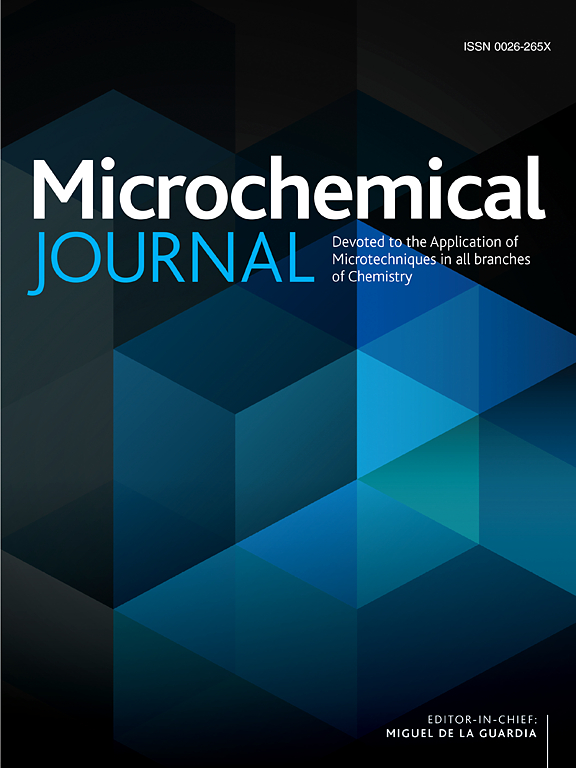Unlocking diagnostic potential: Advances in biosensing platforms for detection of cystatin C, a kidney disease biomarker
IF 4.9
2区 化学
Q1 CHEMISTRY, ANALYTICAL
引用次数: 0
Abstract
The most significant challenge in kidney disease management is early diagnosis. In the initial stages of chronic kidney disease (CKD), symptoms are often minimal or absent, making it difficult to recognize the disease until it has inevitably progressed. The kidneys play crucial roles in maintaining body functions, such as regulating homeostasis, controlling blood pressure, balancing water and electrolytes, and removing metabolic waste. Detecting renal dysfunction early and selecting effective treatment methods can significantly reduce mortality in affected patients. Traditional indicators of kidney function, however, often lack the specificity and sensitivity needed for early detection. Recent studies suggest that cystatin C (CysC) could be an ideal biomarker for assessing glomerular filtration. CysC, a cysteine protease inhibitor, is synthesized by all nucleated cells and is readily filtered due to its positive charge and low molecular weight. Monitoring CysC levels in body fluids is therefore essential for the timely diagnosis and treatment of various kidney diseases, including CKD. In addition to conventional methods, different types of biosensors have been developed to detect CysC, offering a promising approach by combining the specificity of biomarkers with the high sensitivity of advanced technology. These biosensors, particularly electrochemical and optical types, have shown significant potential for precise and timely CysC detection. In this review, we provide a comprehensive insight into the current biosensors used in detecting CysC and explore their applications as a novel approach for identifying this crucial CKD biomarker.

释放诊断潜力:肾脏疾病生物标志物胱抑素C检测的生物传感平台进展
肾脏疾病管理的最大挑战是早期诊断。在慢性肾脏疾病(CKD)的初始阶段,症状通常很轻微或没有症状,这使得很难识别疾病,直到它不可避免地进展。肾脏在维持机体功能方面起着至关重要的作用,如调节体内平衡、控制血压、平衡水和电解质以及清除代谢废物。早期发现肾功能不全并选择有效的治疗方法可显著降低患者的死亡率。然而,传统的肾功能指标往往缺乏早期检测所需的特异性和敏感性。最近的研究表明胱抑素C (CysC)可能是评估肾小球滤过的理想生物标志物。CysC是一种半胱氨酸蛋白酶抑制剂,由所有有核细胞合成,由于其正电荷和低分子量,易于过滤。因此,监测体液中的CysC水平对于及时诊断和治疗各种肾脏疾病(包括慢性肾病)至关重要。除了传统的检测方法外,不同类型的生物传感器已经被开发出来用于检测CysC,将生物标志物的特异性与先进技术的高灵敏度相结合,提供了一种很有前途的方法。这些生物传感器,特别是电化学和光学类型,已经显示出精确和及时检测CysC的巨大潜力。在这篇综述中,我们提供了对目前用于检测CysC的生物传感器的全面了解,并探索了它们作为识别这一关键CKD生物标志物的新方法的应用。
本文章由计算机程序翻译,如有差异,请以英文原文为准。
求助全文
约1分钟内获得全文
求助全文
来源期刊

Microchemical Journal
化学-分析化学
CiteScore
8.70
自引率
8.30%
发文量
1131
审稿时长
1.9 months
期刊介绍:
The Microchemical Journal is a peer reviewed journal devoted to all aspects and phases of analytical chemistry and chemical analysis. The Microchemical Journal publishes articles which are at the forefront of modern analytical chemistry and cover innovations in the techniques to the finest possible limits. This includes fundamental aspects, instrumentation, new developments, innovative and novel methods and applications including environmental and clinical field.
Traditional classical analytical methods such as spectrophotometry and titrimetry as well as established instrumentation methods such as flame and graphite furnace atomic absorption spectrometry, gas chromatography, and modified glassy or carbon electrode electrochemical methods will be considered, provided they show significant improvements and novelty compared to the established methods.
 求助内容:
求助内容: 应助结果提醒方式:
应助结果提醒方式:


